Unit 1
Studio Project 1 – Common + Curious: Sum of Their Parts
Worker Bees! Bzzzz…
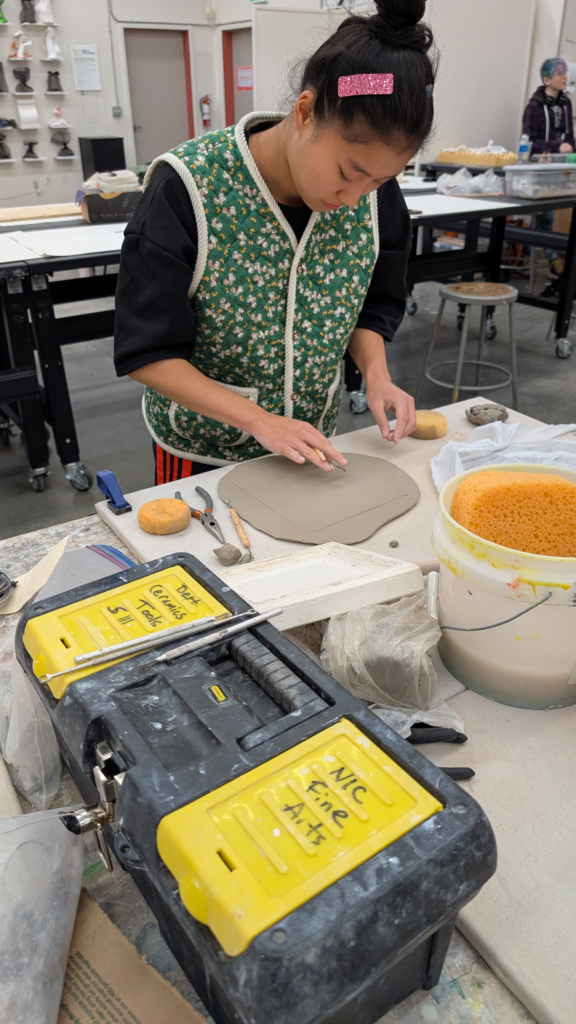
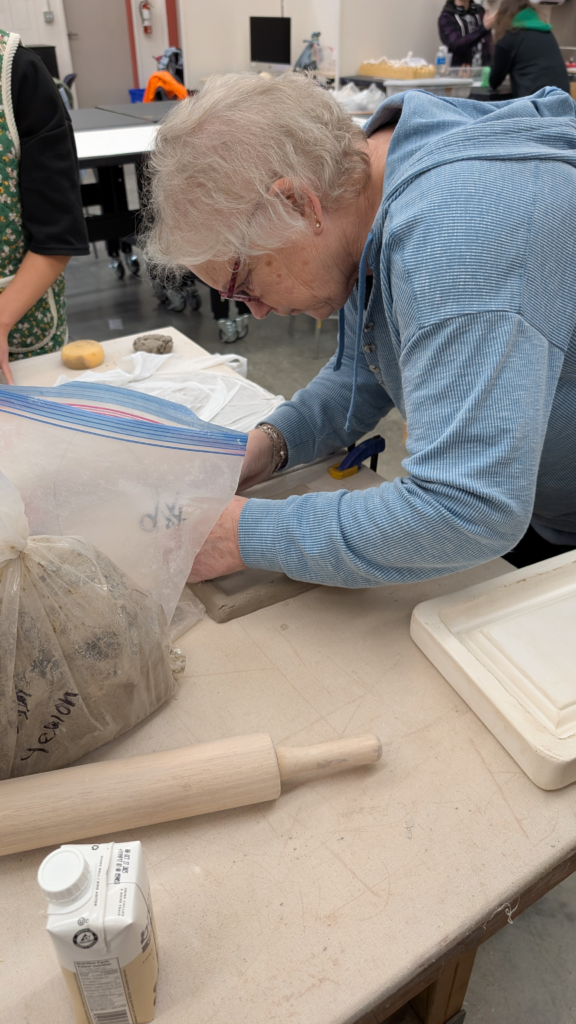
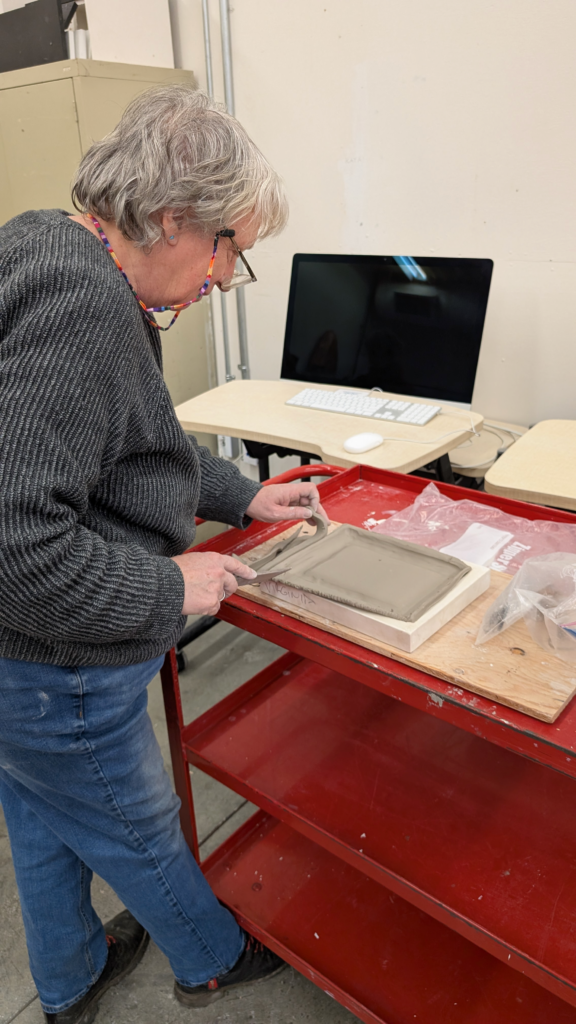
Frame Process
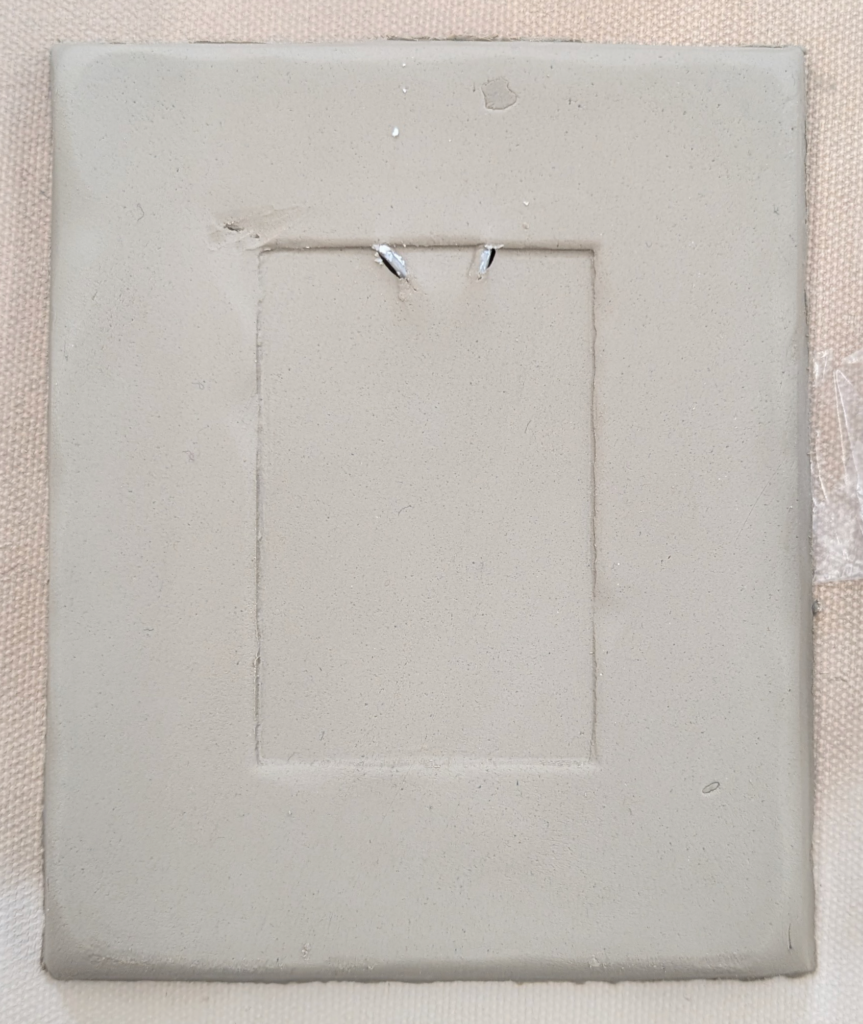
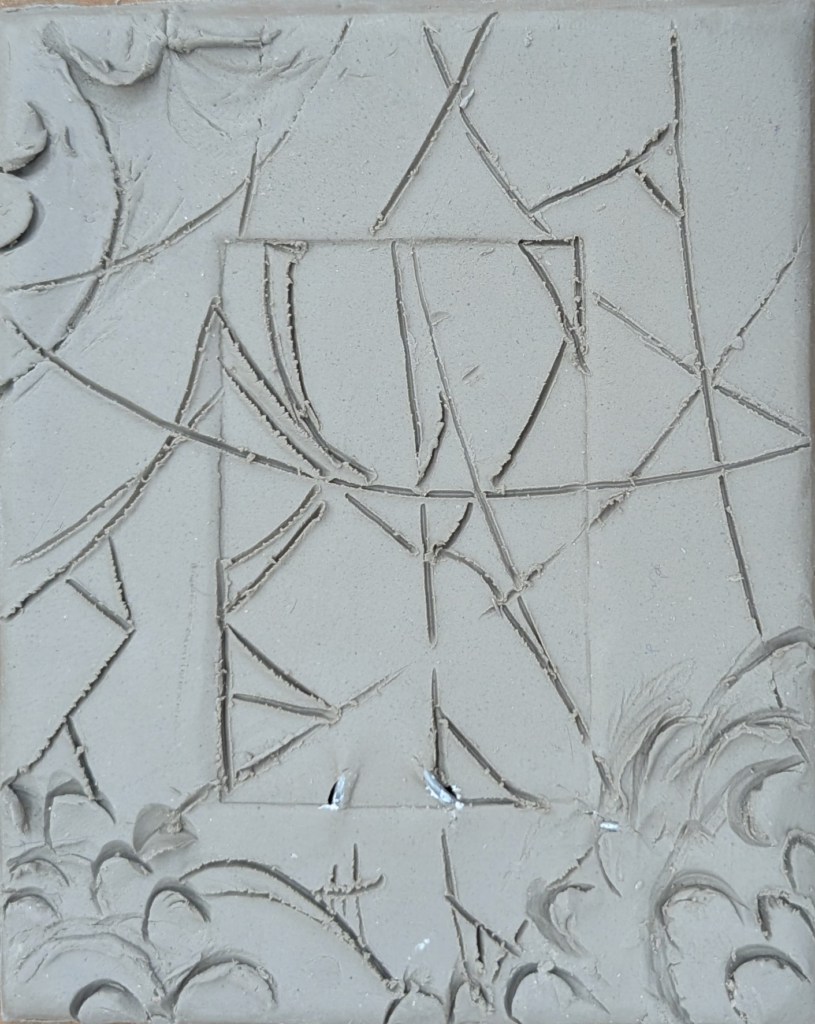

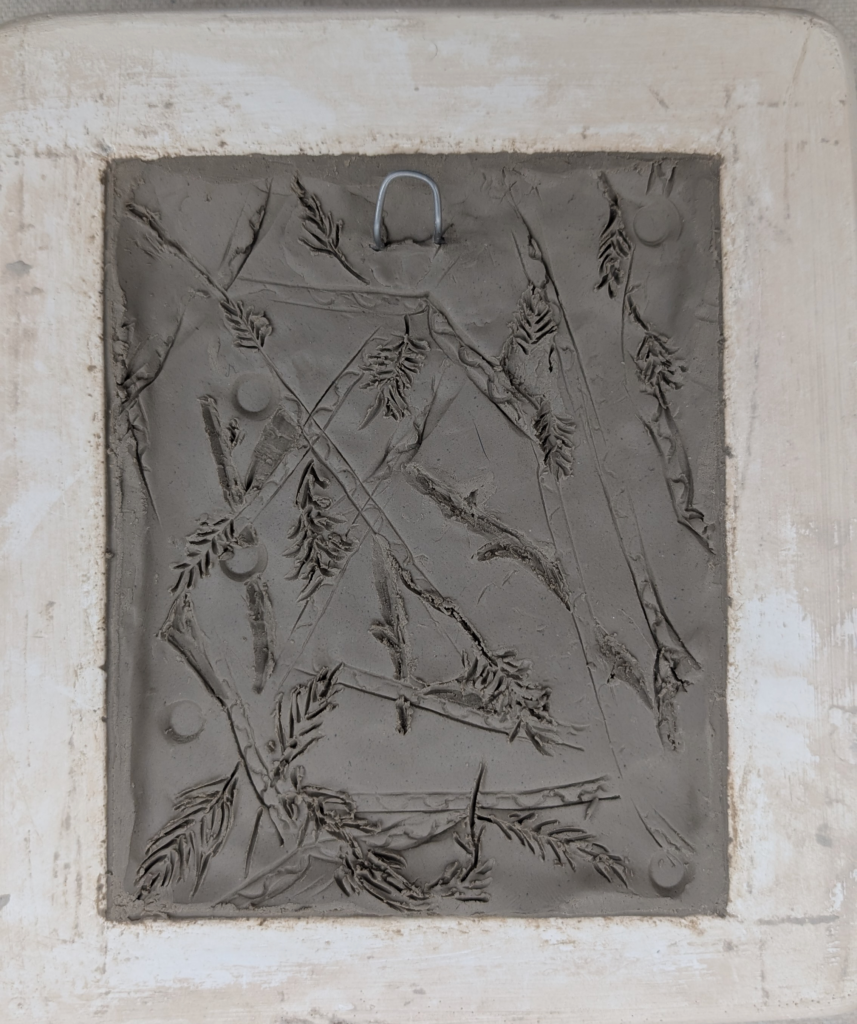
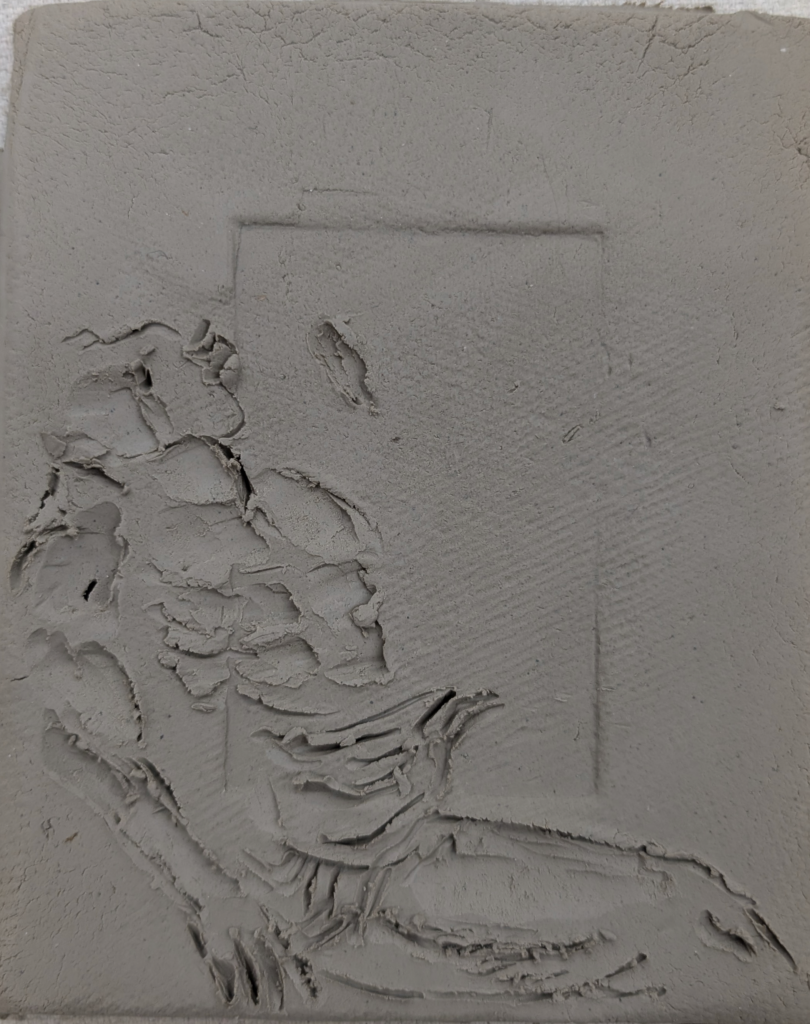
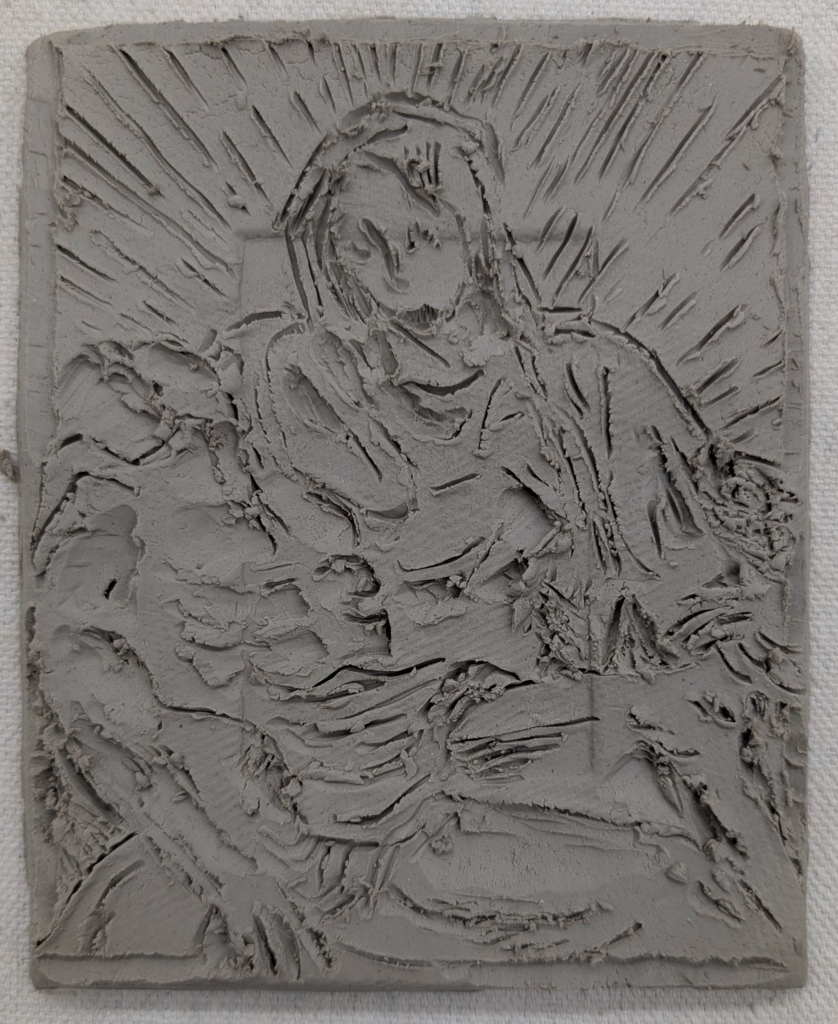
Unfortunately, I poked the metal hanger through my first frame, and some ended up having the texture added on the opposite side, but I made an extra frame to consider the frame acting as a sort of prayer book, after we discussed that attention can be given to both sides. I imitated the bottom left organic imagery for the rest of the ‘book’ on one side of the next frame.
I etched and created 3D impressions into the last frame to create a ‘pieta’ drawing; I don’t mind if it’s not entirely visible after glazing or becomes obscured – I am still interested to see the results. I am imagining it glazed in a midnight blue glaze if possible with a sort of oily sheen.
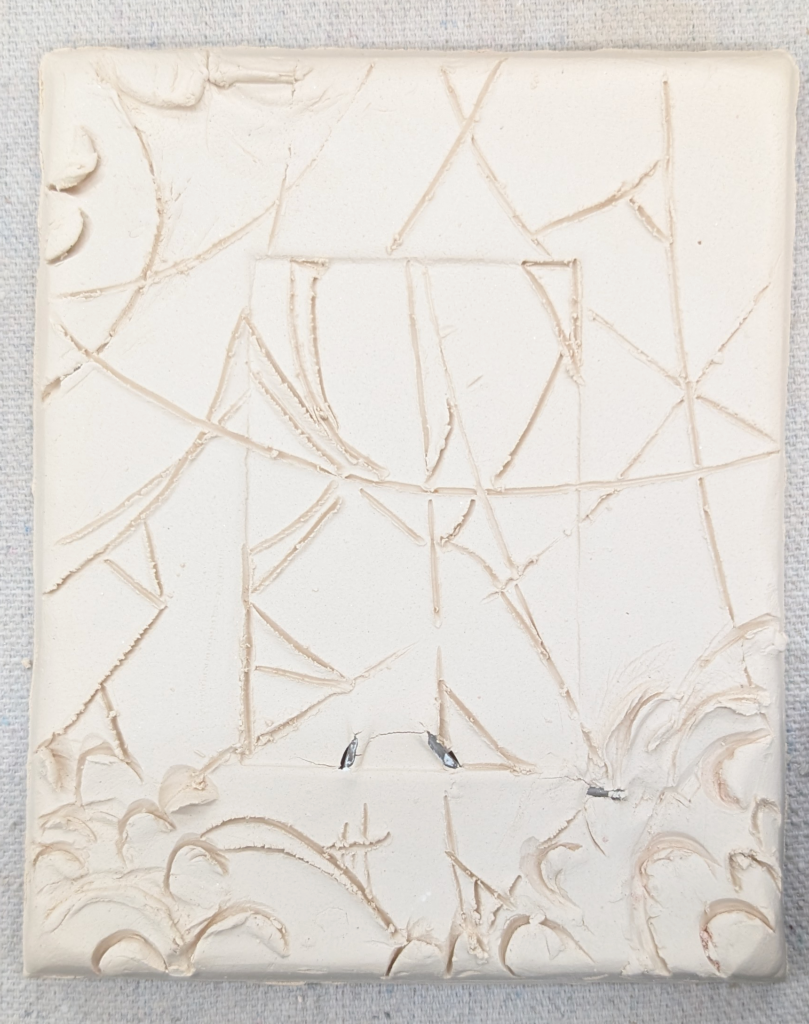
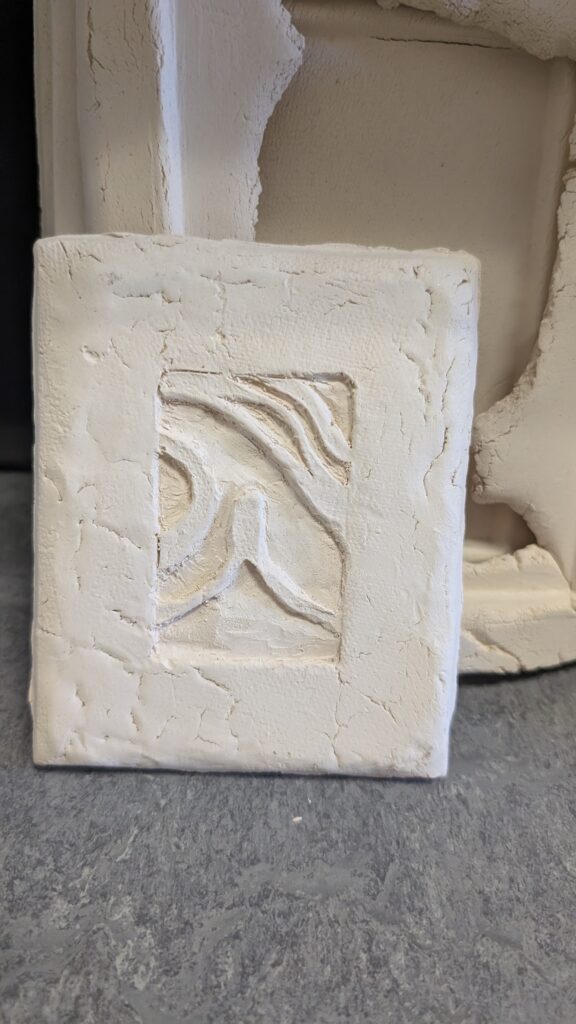
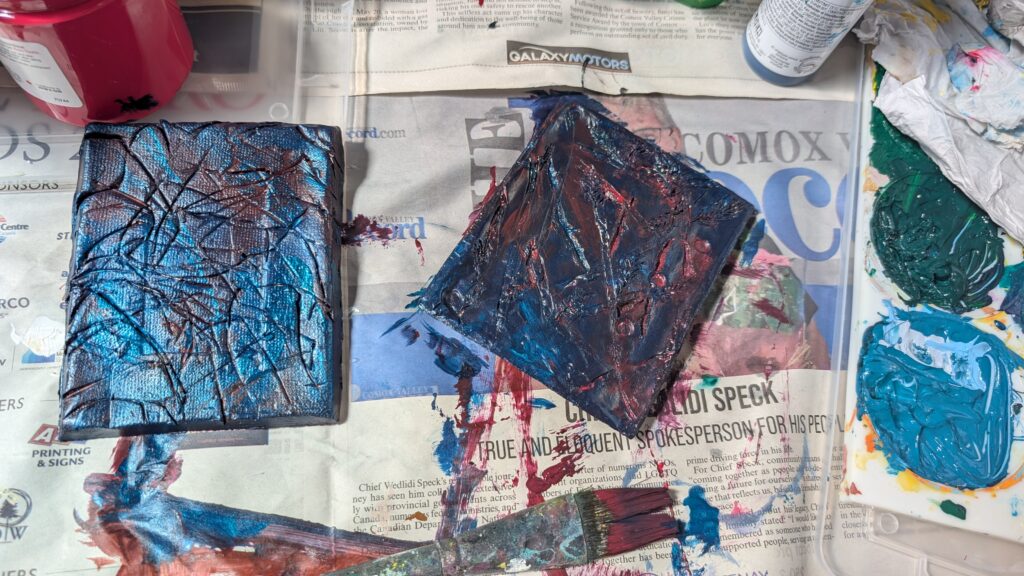
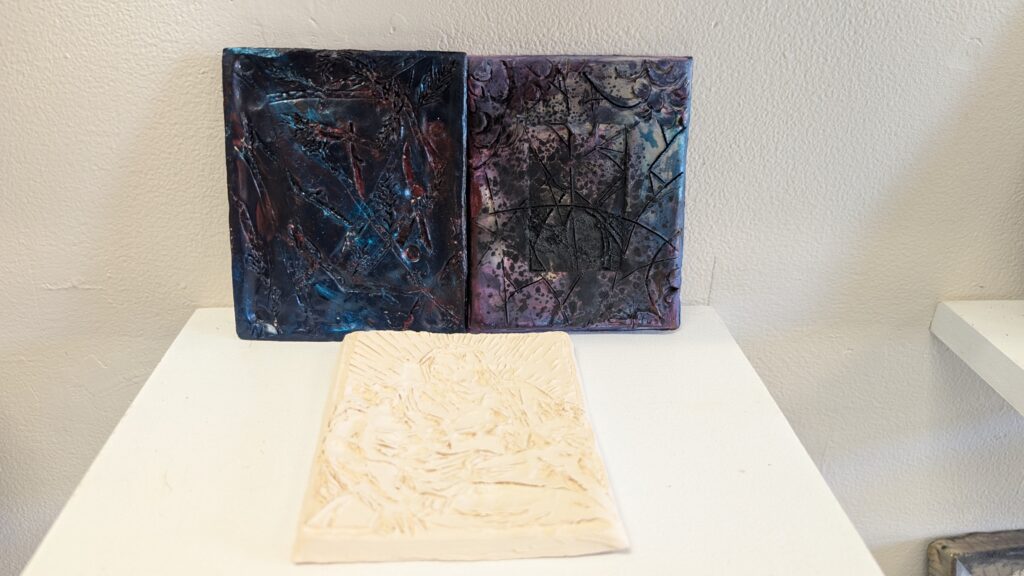

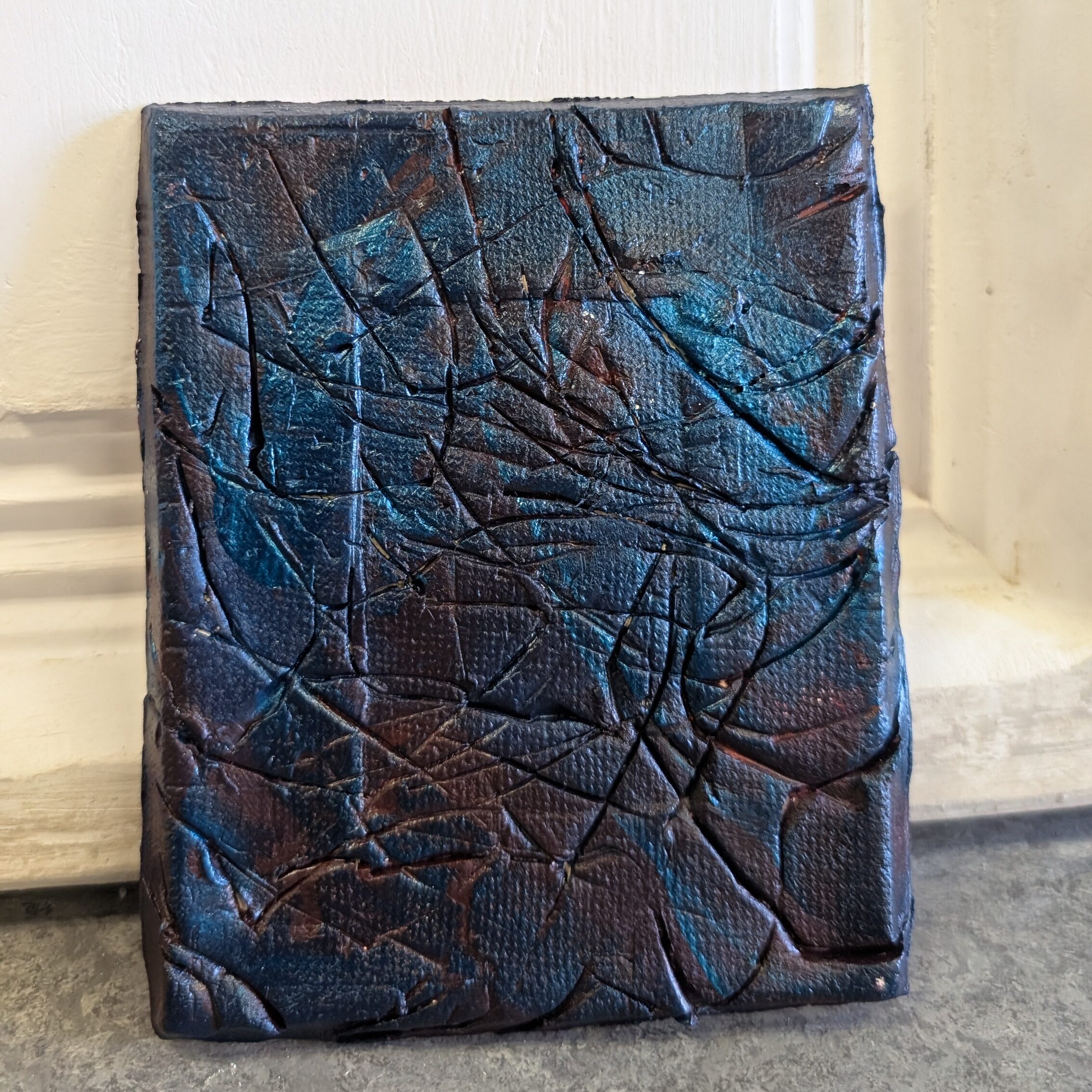
Eco Messaging for Multiples – Modeling Clay Construction
For the construction of my fish, I ended up first creating a 3D figure which ended up needing to wrap around the cup lid, and I created a hole to poke the tail through and wrap around. I used line and texture to imitate what would have been a 3D look for the tail curling around after shaving off at least half of the width of the original fish and (eek) decapitating it a bit for the added separation between upper half and tail that was used. The rubber mould captured the texture well, and is coming out in the casts well also.
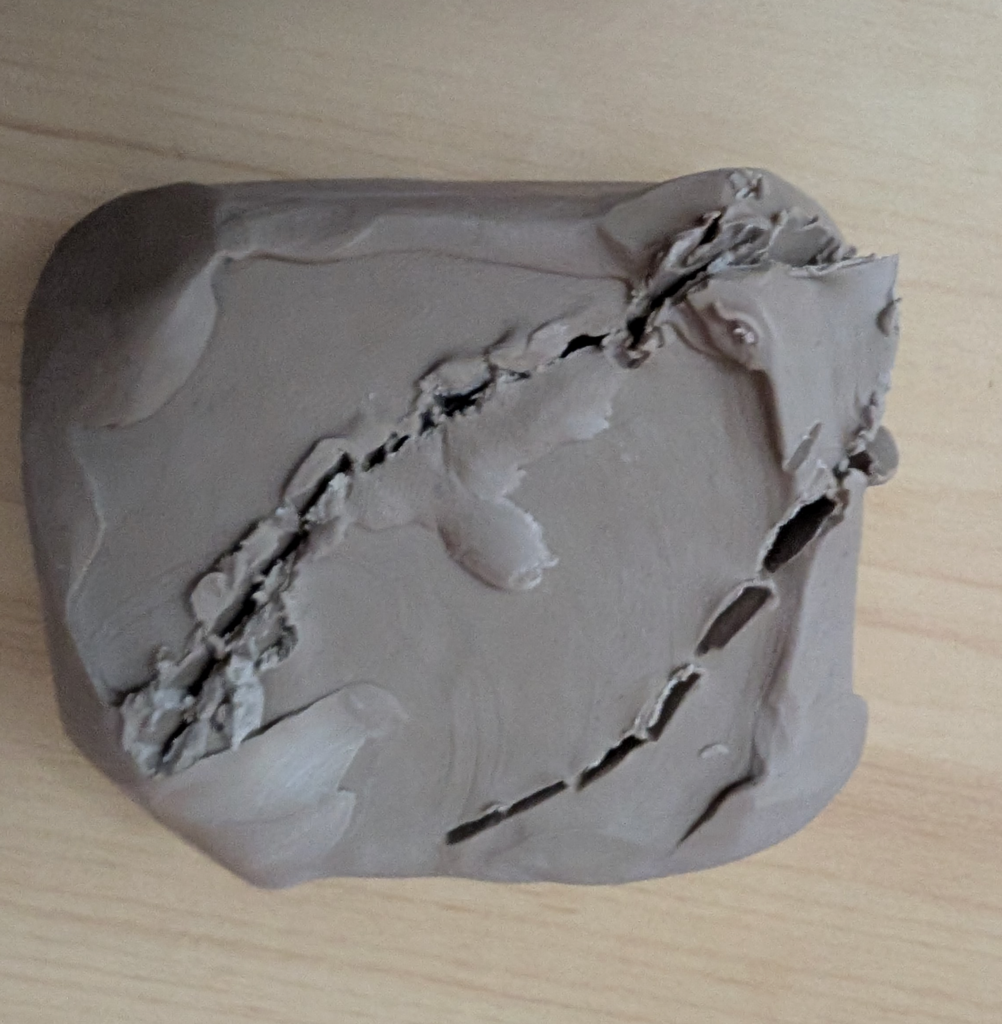
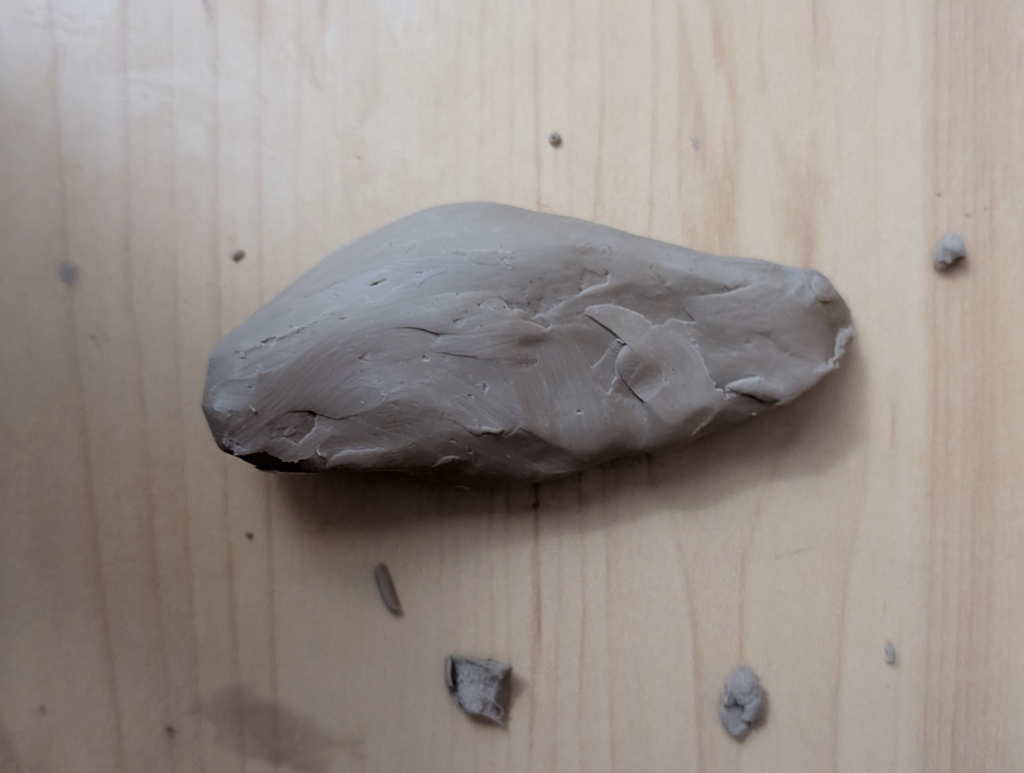
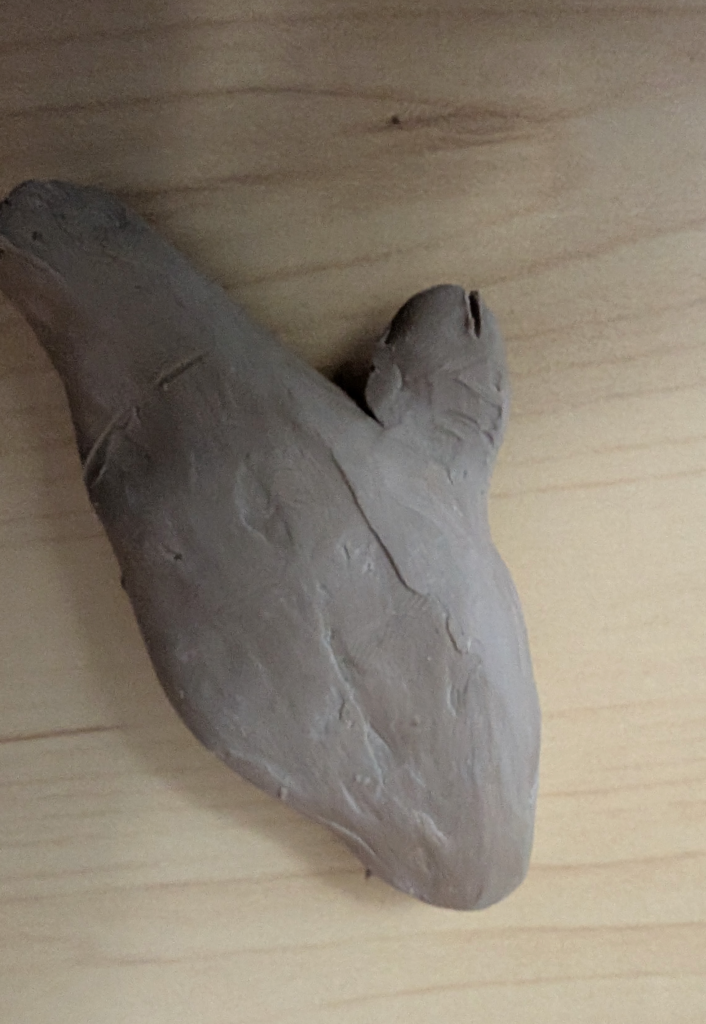

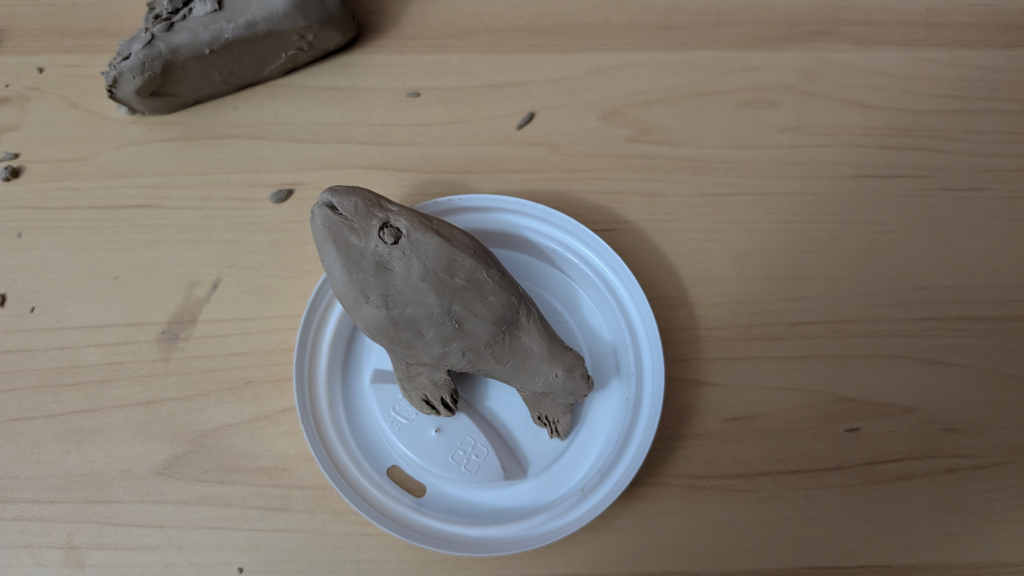
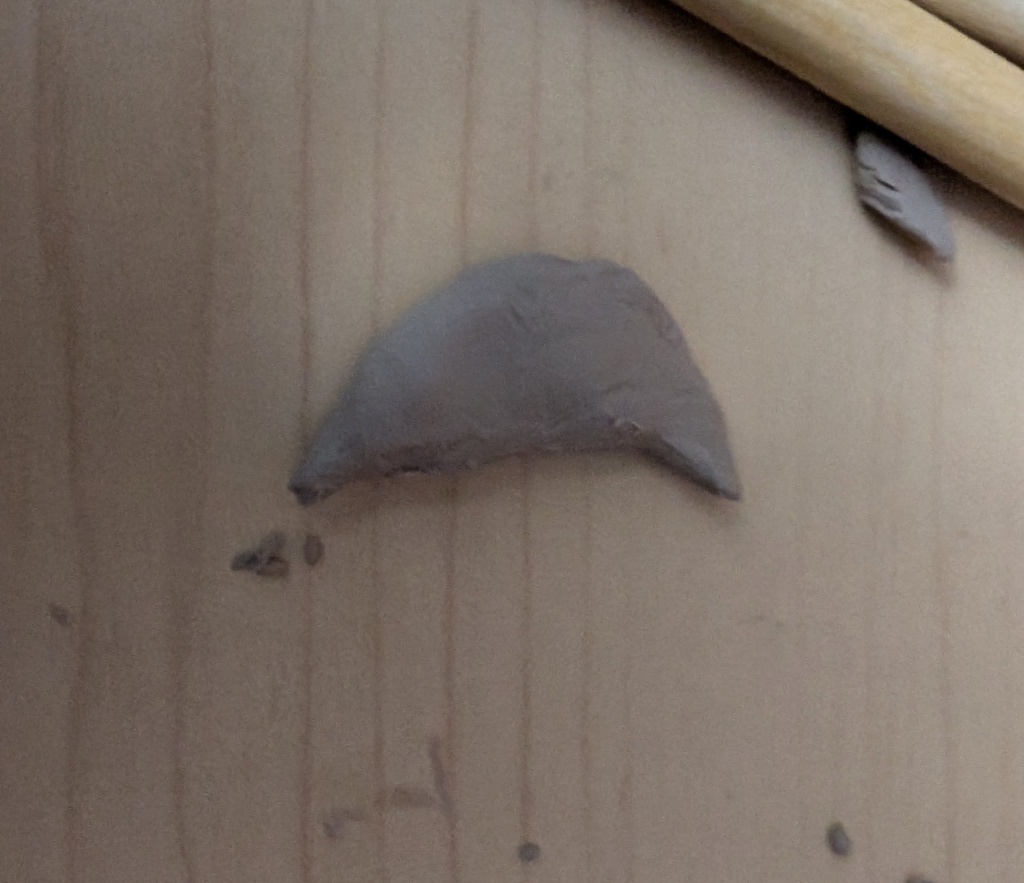
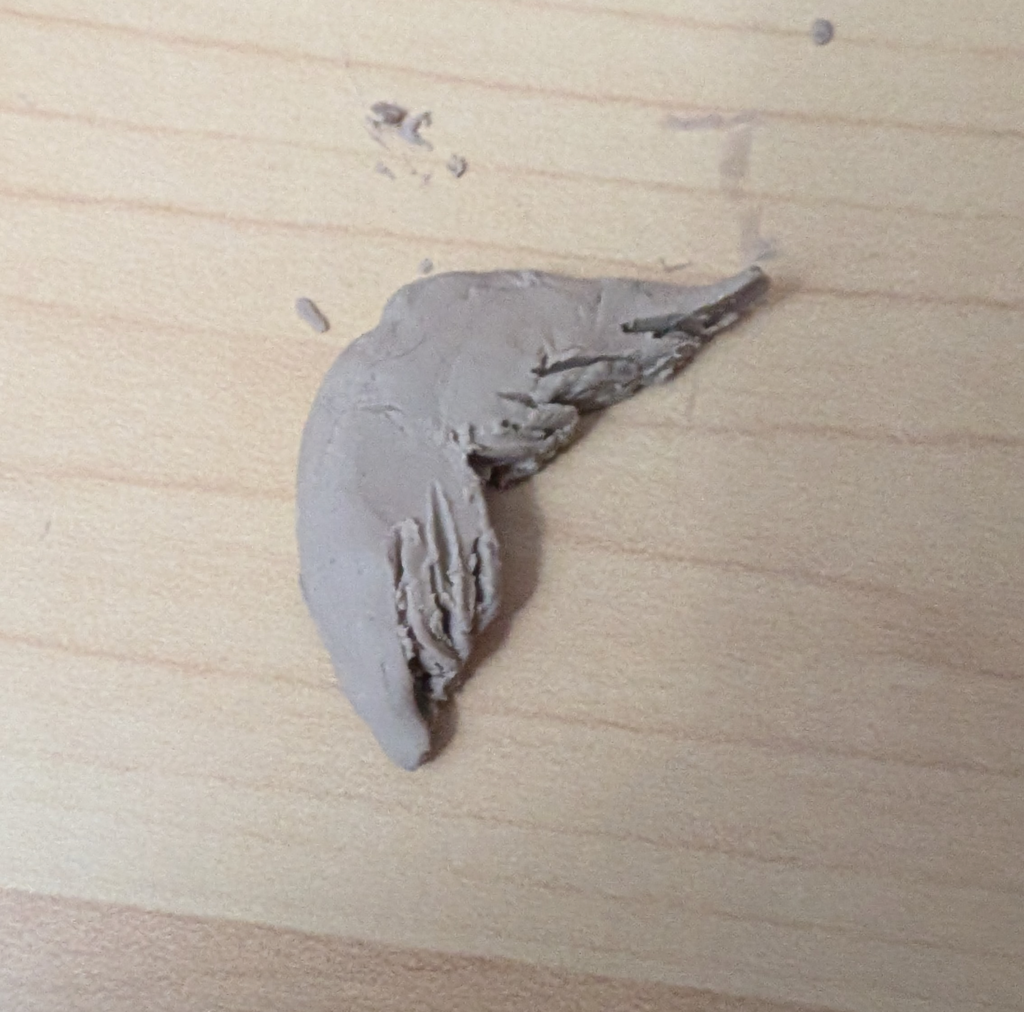
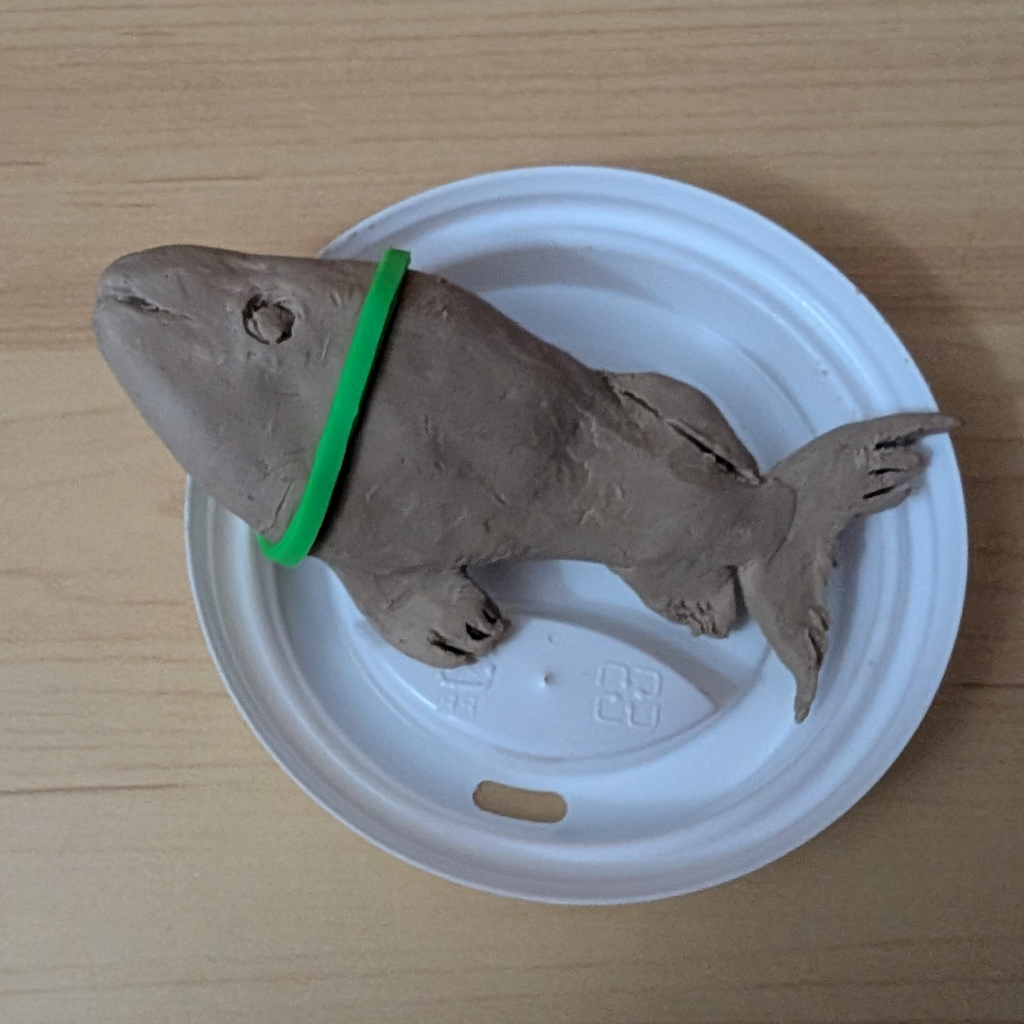
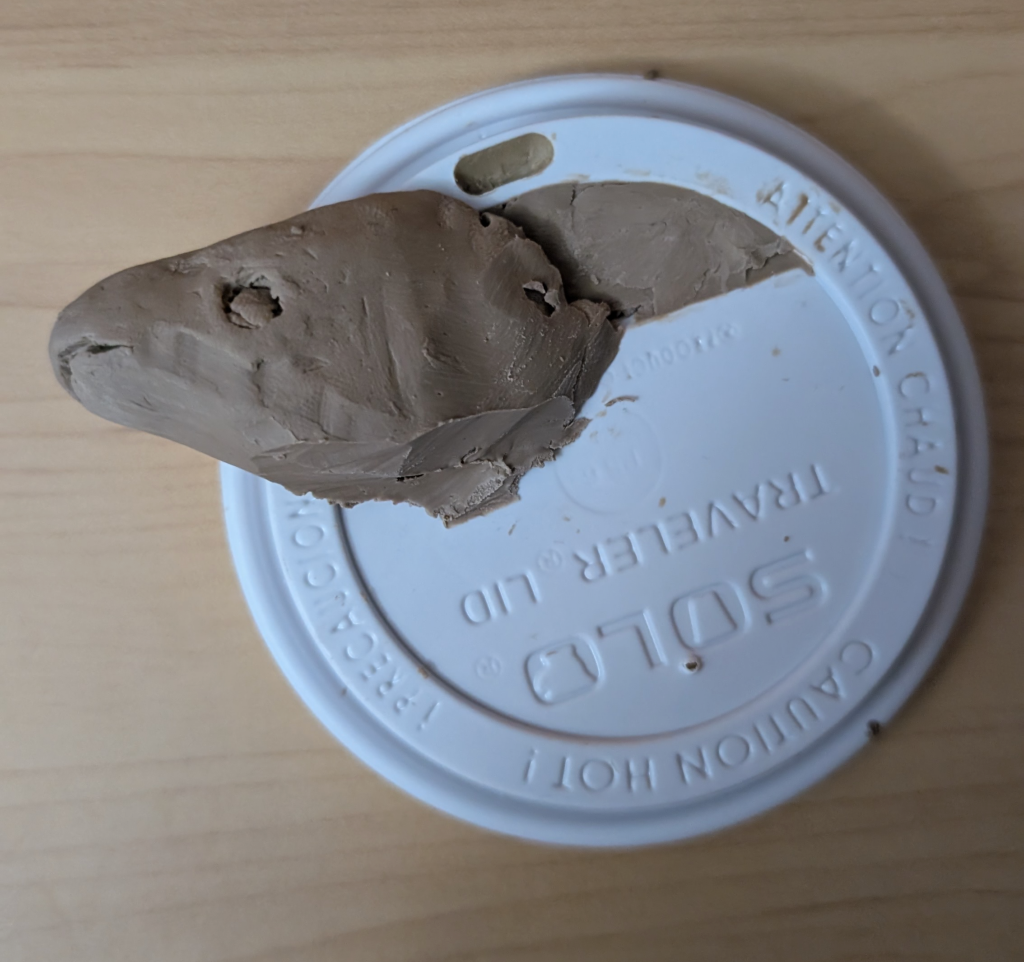
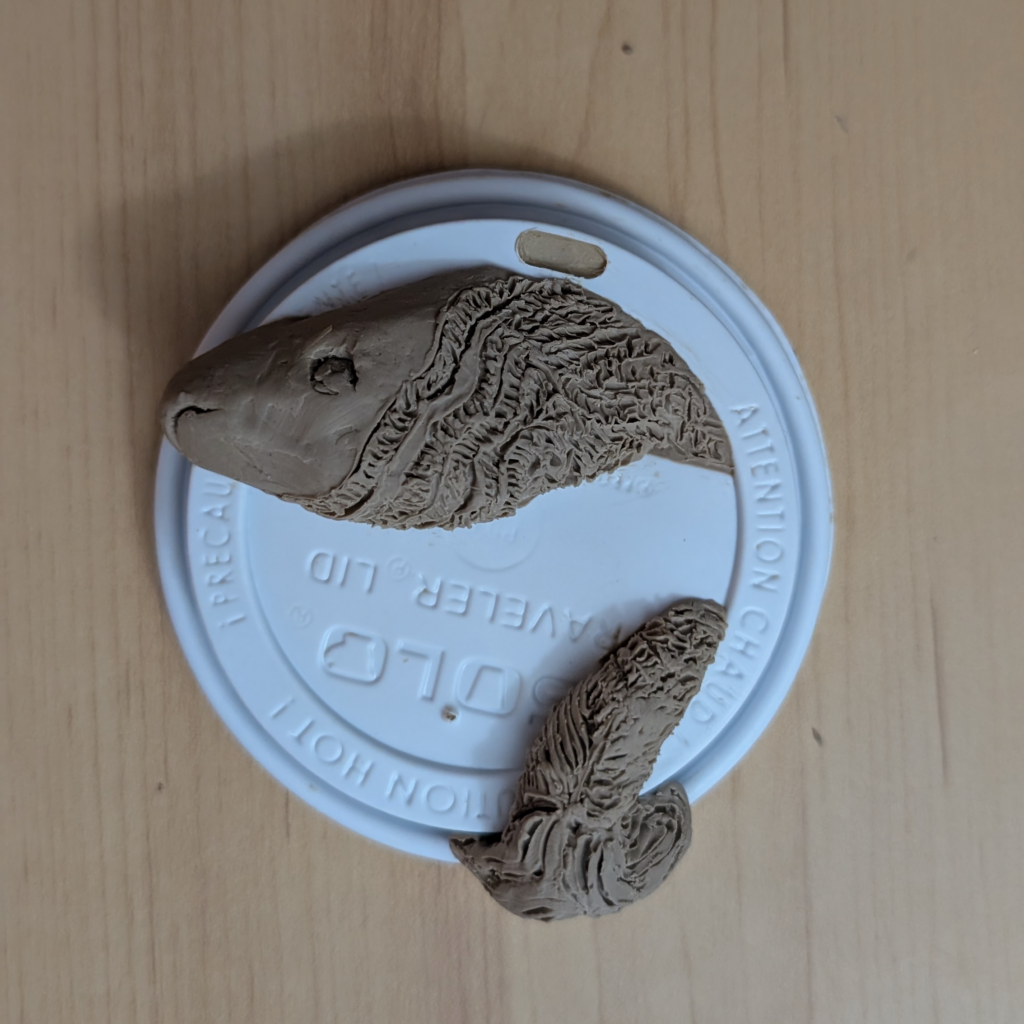
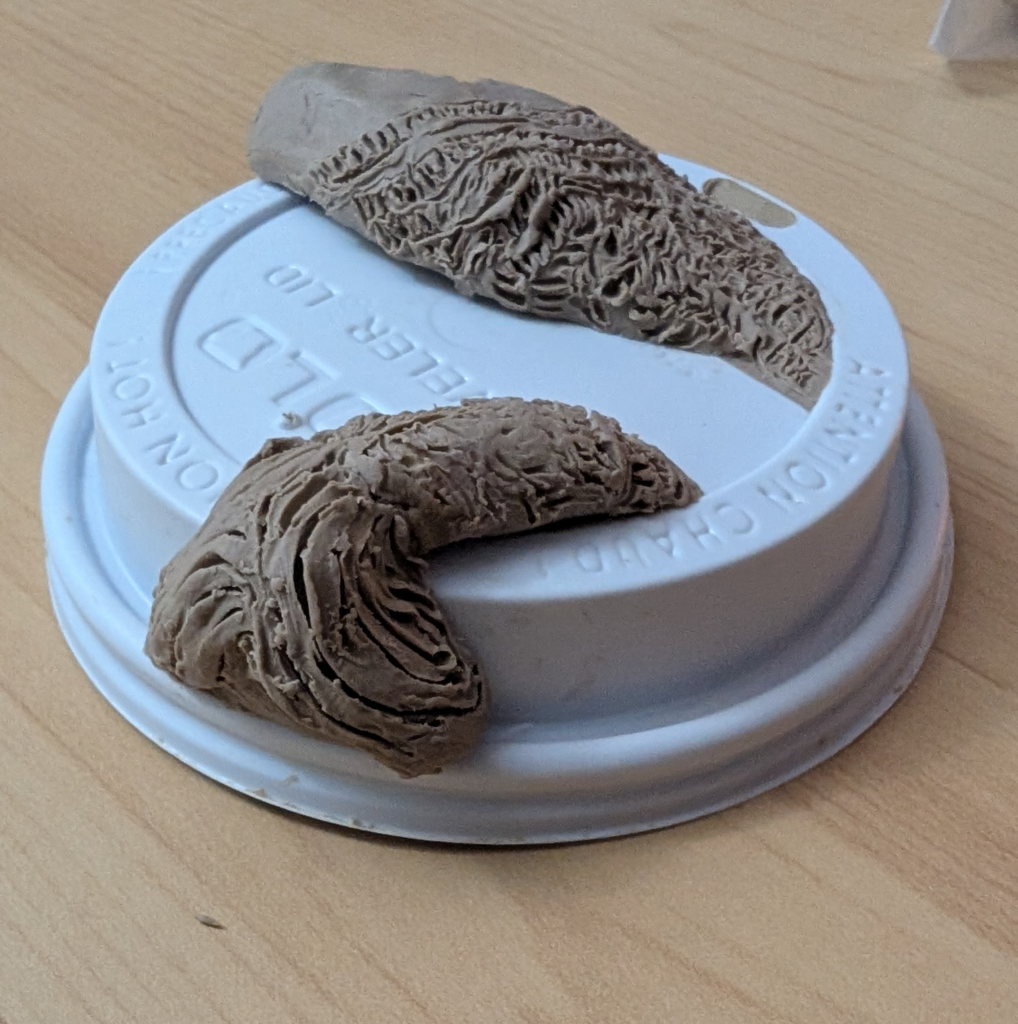
Casting Worker Bees!

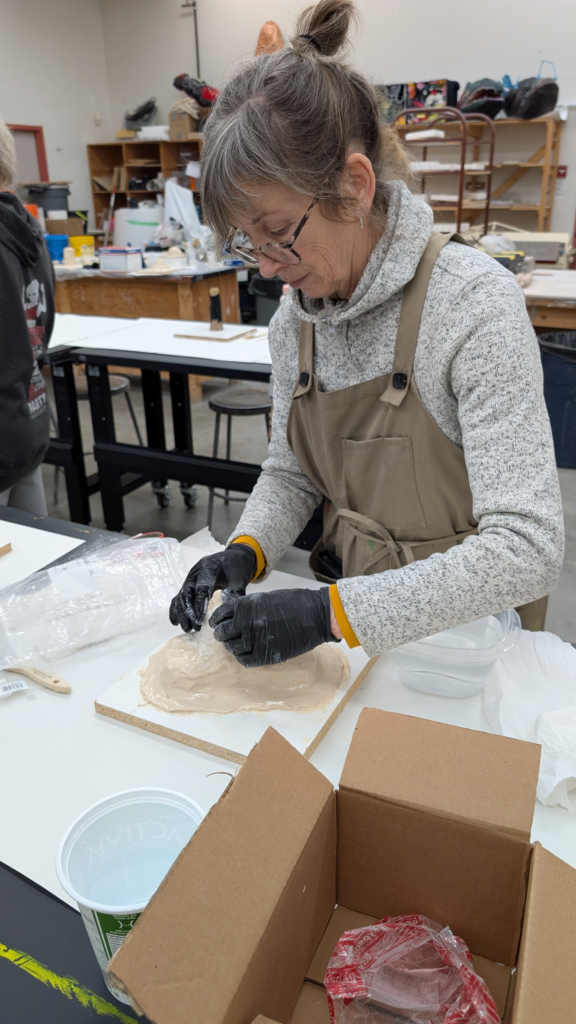
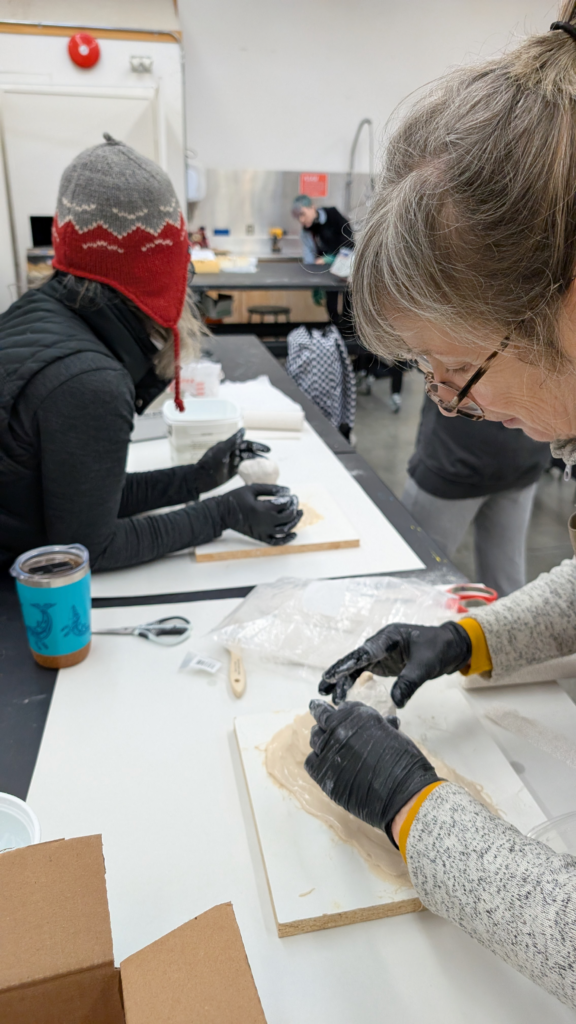
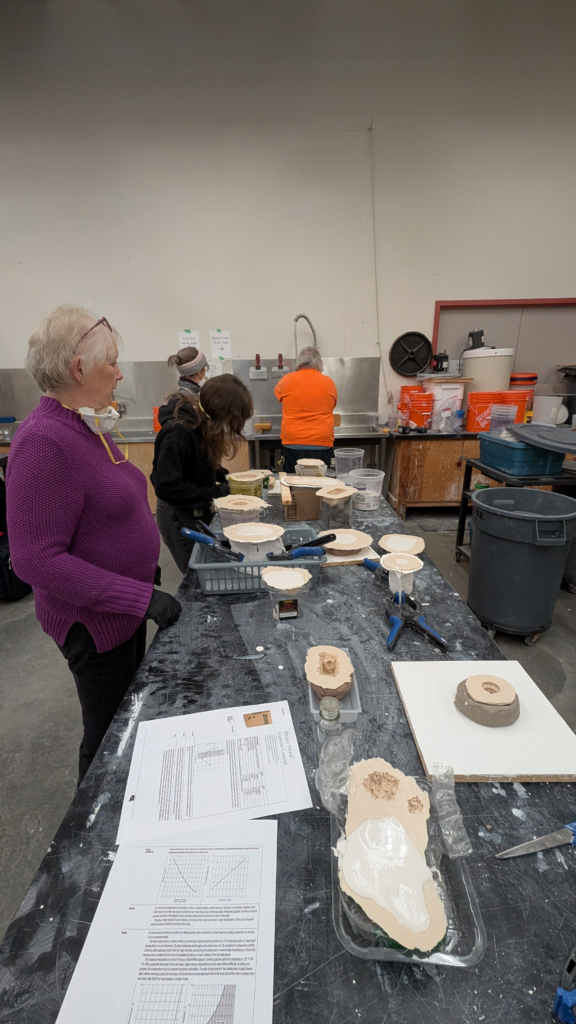
Rubber Mould Results & Models
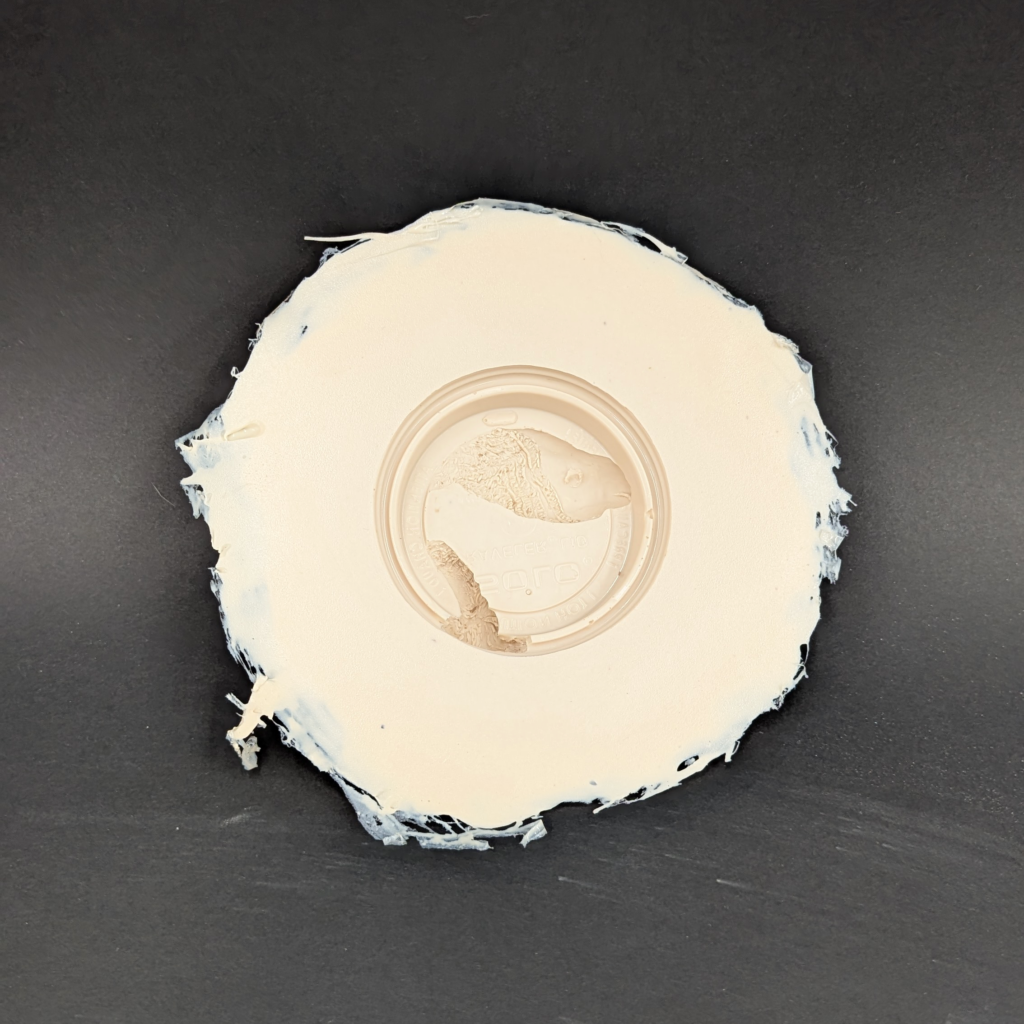
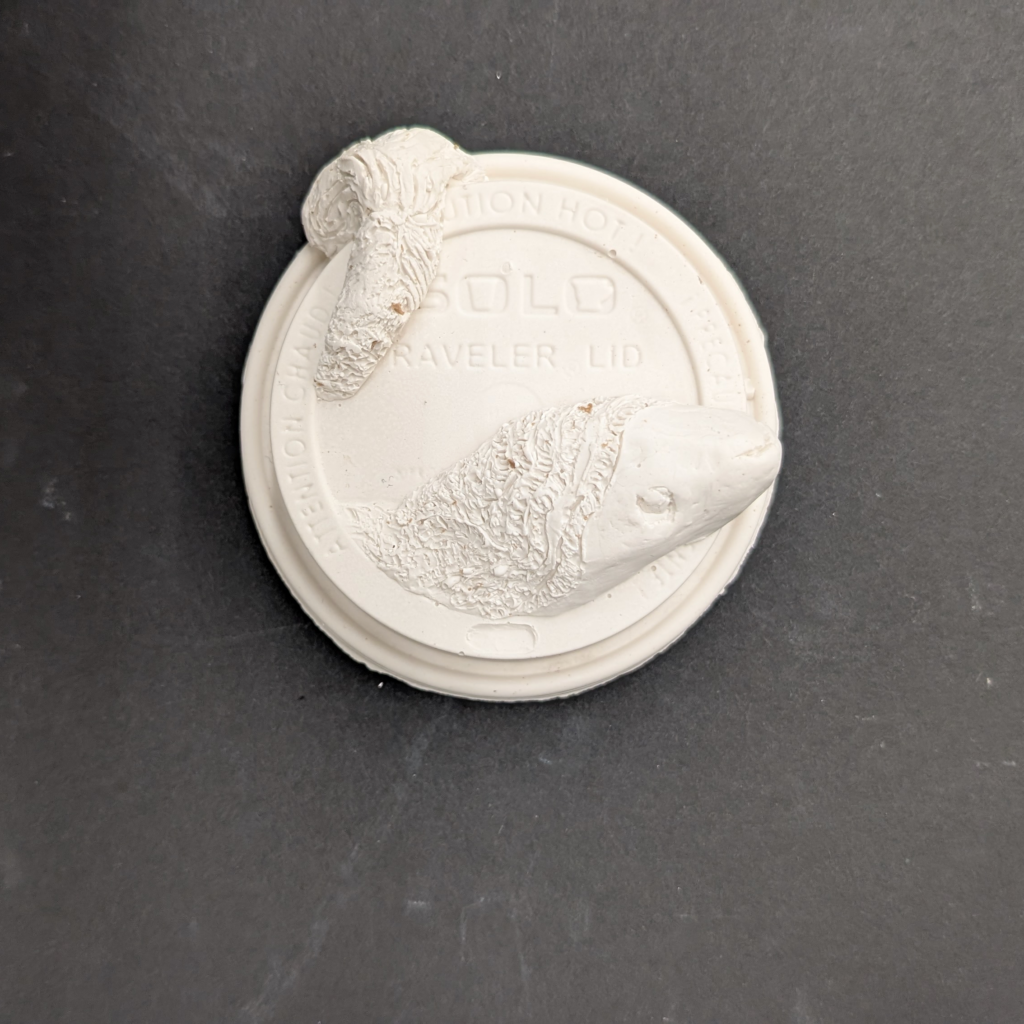
Models before sanding.
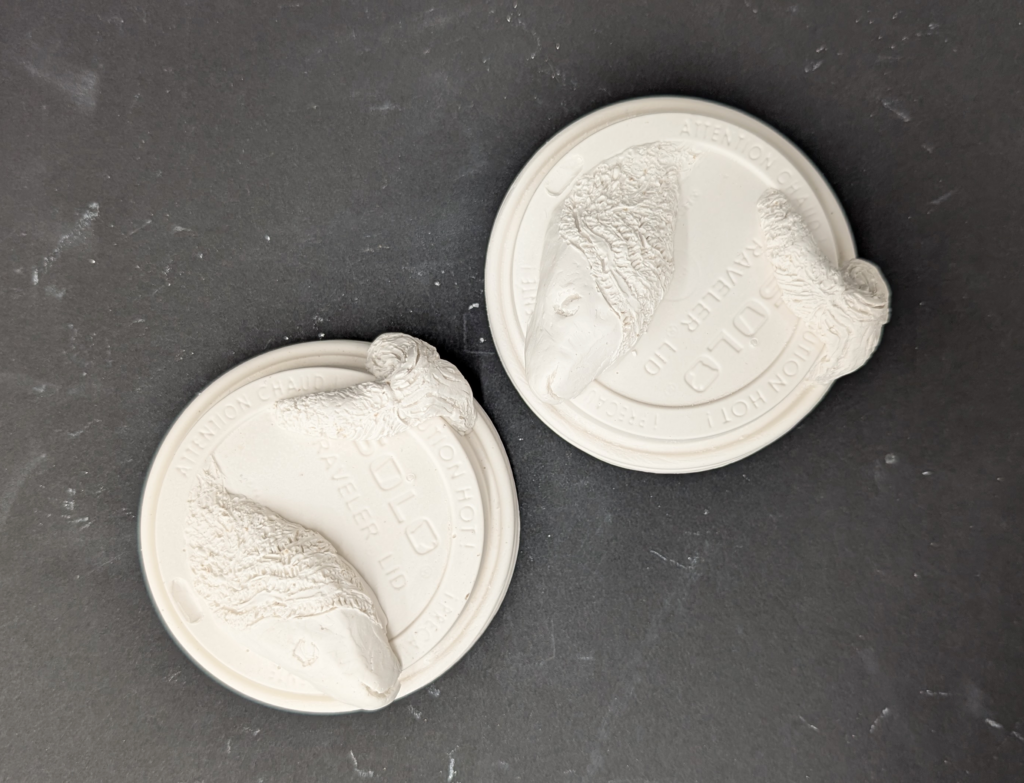
Models after sanding.
I would like to see how the fish / cup model can work painted black with blacklight details and painting, however if it is black the cup could end up obscured too much in the process unless a type of medium works with blacklight paint (which I first have to find, and might be an added cost I would have to justify. I discussed lighting and water with Carys for the installation, so I am also having to consider starting simple and seeing how this goes step by step if water is involved for the cup to sit in and whether or not it will be visible under low enough light to capture neon blacklight.
Kaboom! Clay Firing
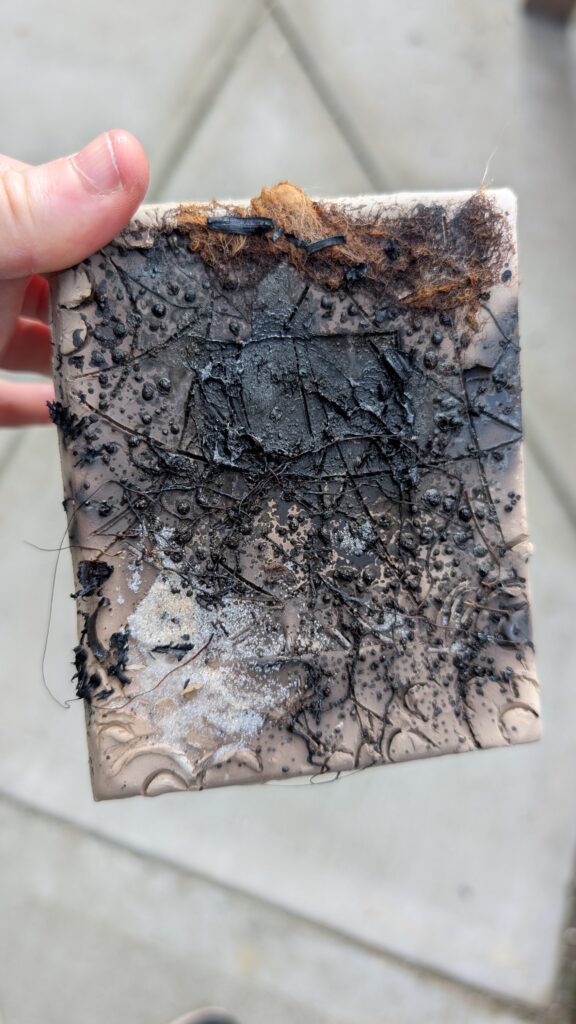
Carys created (cat hair, I believe) and sugar drawings for me on my clay frame piece. Unfortunately, I was away for glazing, but I am hoping the frames will be able to reach their potential at a future date.
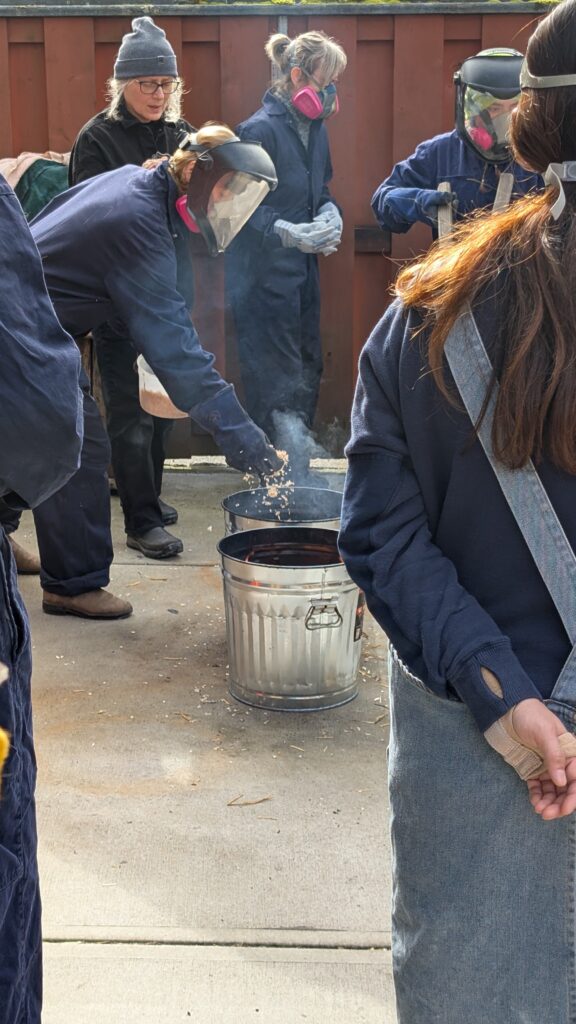
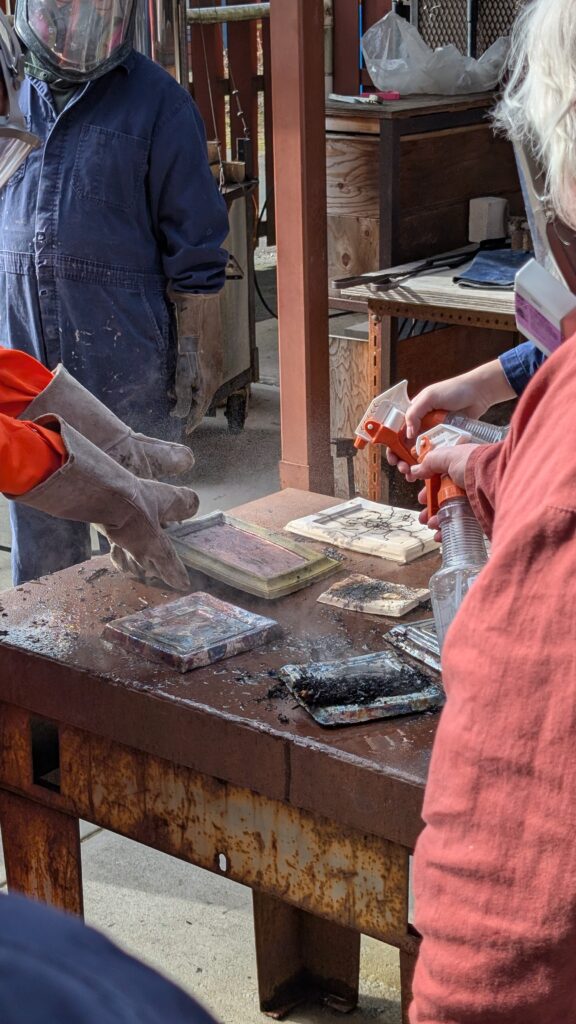
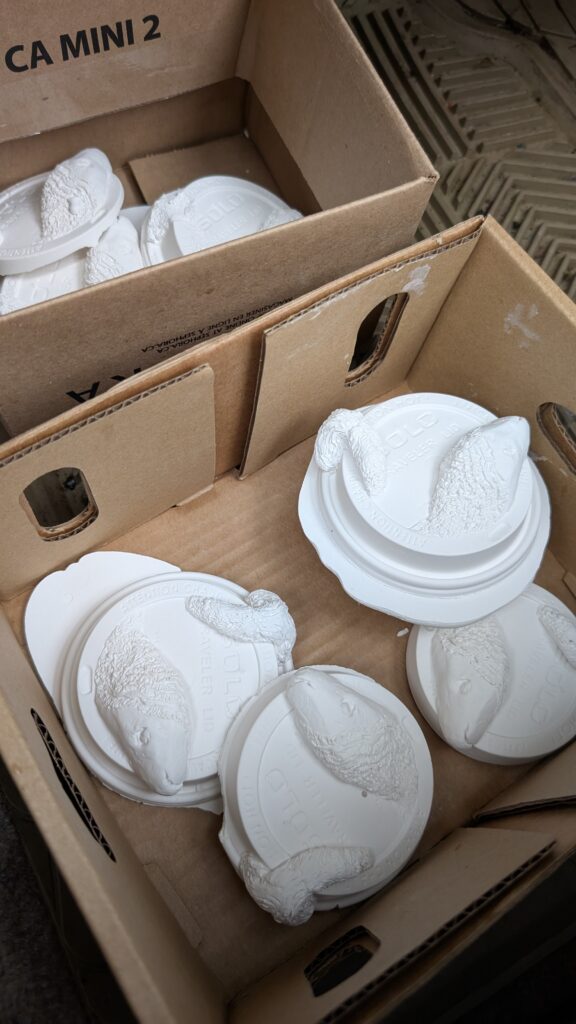
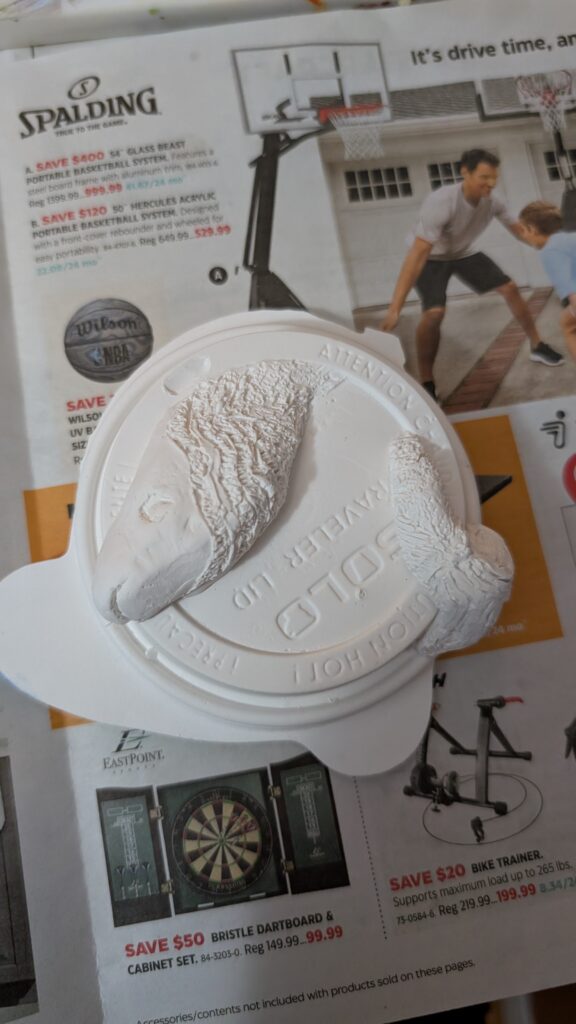
What a gift! Returning after holidays, my peers had made several moulds for me.
This gave me a lot more options as for how to make my art feel more ‘uncomfortable.’
Originally, I had thought that more uniform coffee cup shapes would be more commercialized, and eerie in that sense, but I ended up enjoying a variation and the sinking effects and unusual, manufactured yet organic shapes felt more like what I wanted in the end.

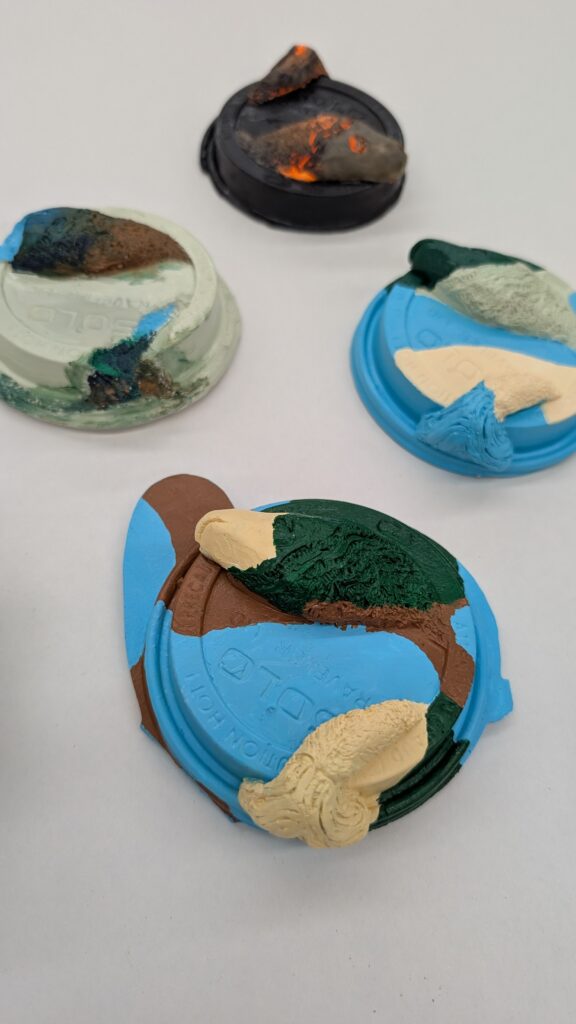
The painting on the fish coffee cups are multi-functional for me. I wanted them to serve like a type of political propaganda as the multiples took me on a journey back to creating what I feel is political art. I feel you have to be political to make statements about the environment nowadays, because many people would prefer to turn a blind eye or do not always want to think about such issues for too long. It is difficult to think about our carbon or plastic footprint, and easy to blame it on companies and industry even though they may pump out the most ‘trash.’
When creating colour palettes for the coffee cup lids and mixing paints, the messaging became many different things but I think the end result is mainly more unified, and combined the original idea of blacklight painting without having to go out and buy more products (a theme that this project has also intentionally made me think about – my own consumerism and consumption.)
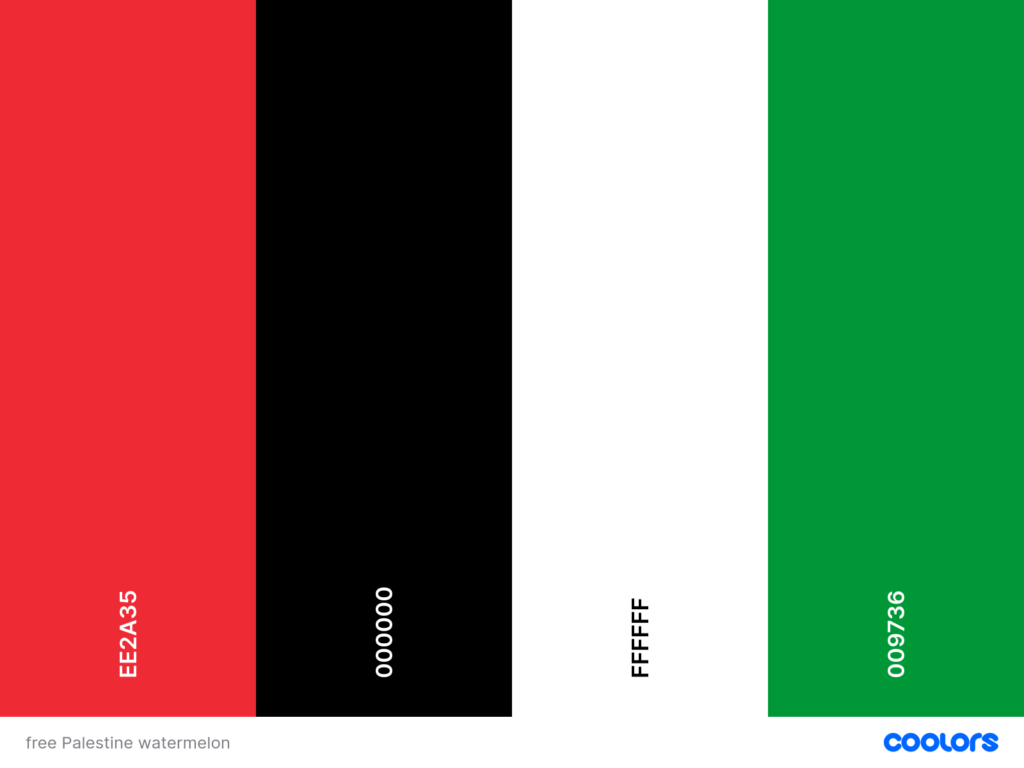
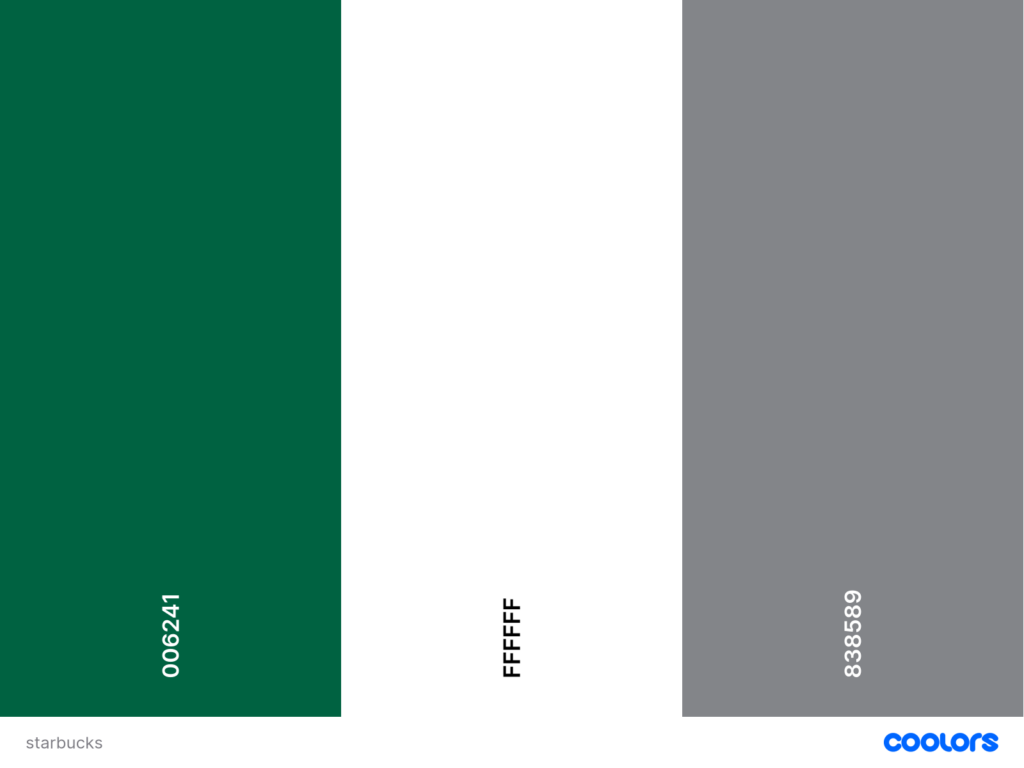
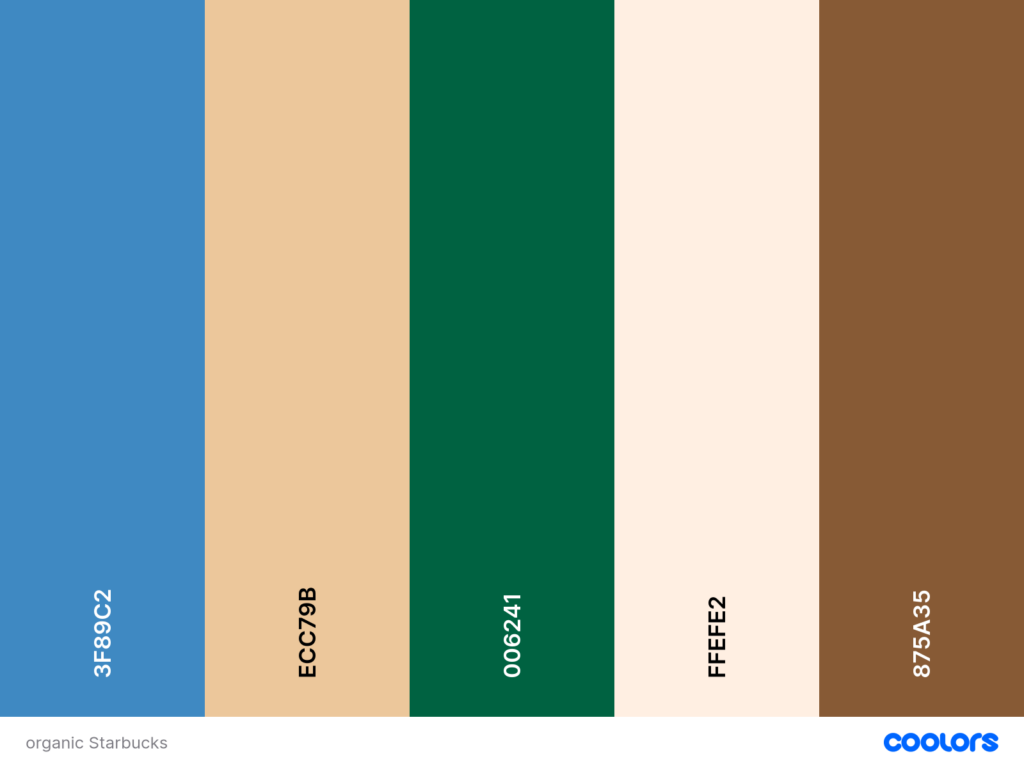
My colour palettes progressed from wanting cups that would express messaging towards ‘Free Palestine,’ a colour palette which was akin to Starbucks, a highly commercialized coffee franchise which has condemned members of its Workers Union for speaking up on Palestinian issues.
“In 2023, Starbucks condemned and then sued Starbucks Workers United over a tweet posted on October 7 with the text “Solidarity with Palestine!” alongside an image of a bulldozer breaking through the Gaza fence. The tweet, written by a single individual and not approved by union leaders, was quickly deleted and later replaced with a full statement in solidarity with Palestine.[2] Starbucks accused the union of showing “support for violence perpetrated by Hamas” and claimed that the lawsuit was necessary to protect itself against the unauthorized use of its name and logo.[3] In response, the union accused Starbucks of “seeking to exploit the ongoing tragedy in Gaza and Israel to bolster an anti-union campaign … by falsely attacking the union’s reputation with workers and the public.”[4]“
Source: https://www.cjpme.org/fs_241
To me, boycotting is a relevant form of protest which is also becoming more important locally with threats of USA tariffs to Canada and supporting local, but that in this case is a way of putting your money where your mouth is and withdrawing support of companies who condemn pro-Palestine statement & activities.
I feel confident that the imagery I’ve achieved with the multiples speaks to both organic, environmental conversation and uncomfortable sense of consumerism which people can be faced with while experiencing it.
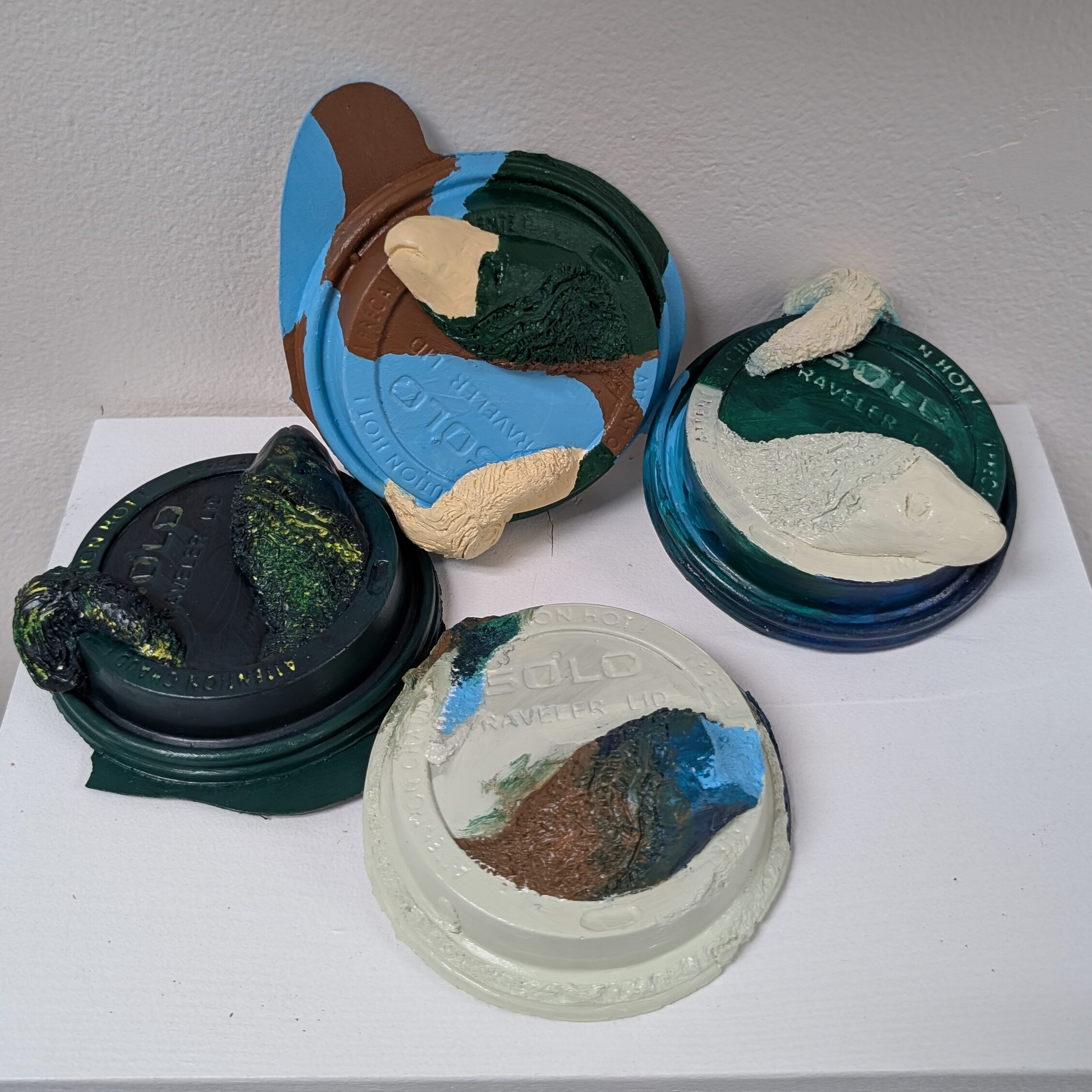
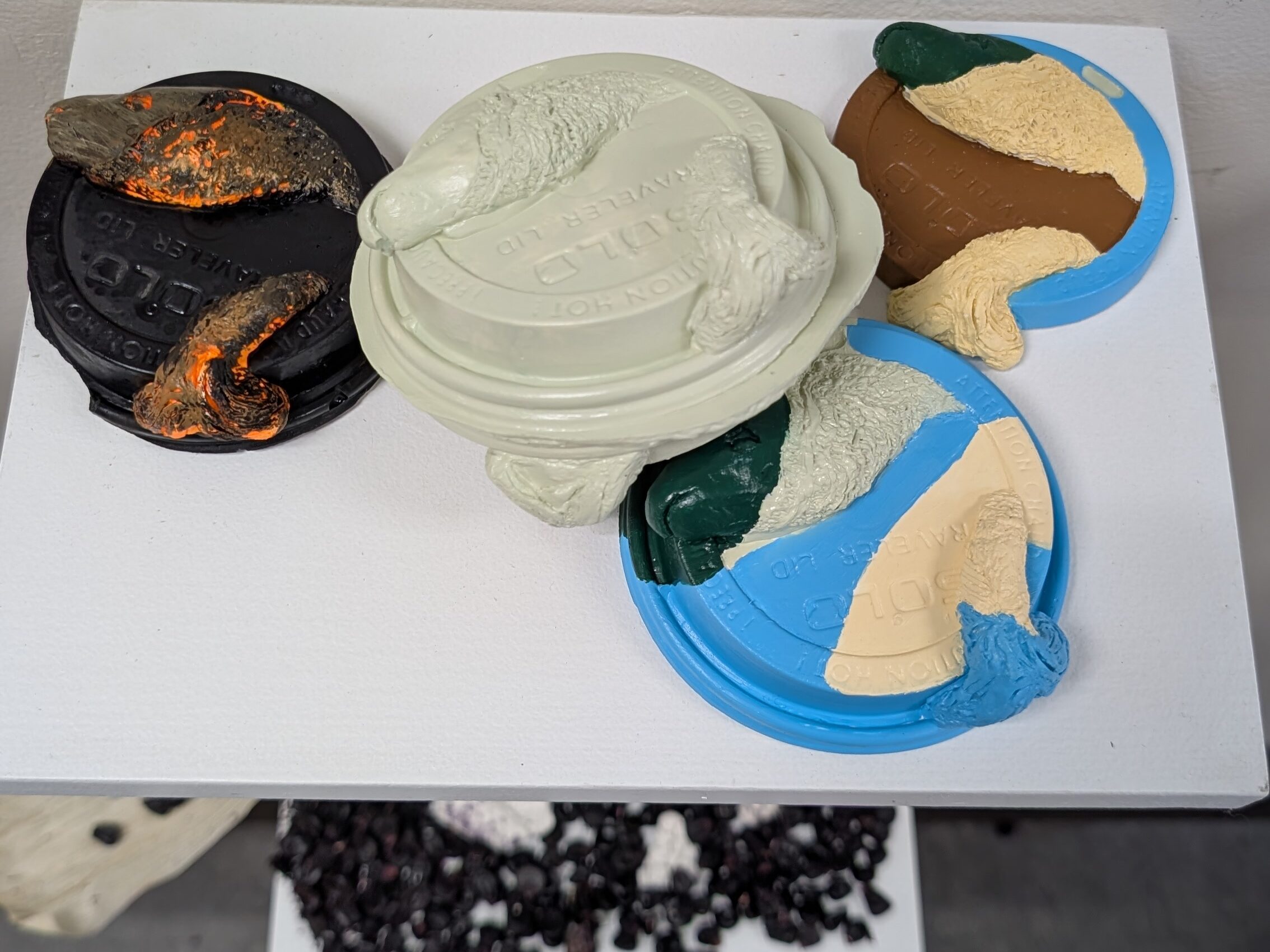
‘Put it Down‘ Poem & Project Statement
“What did you buy today? Buy? Buy, buy! How many? Enough?
Who made it? Made that? What is it made from? Plastic? Don’t know! No!
More! More! No — less! Where did it come from? Where is it going? Can we go? Where? How much?
How many more? More? Being made right now! Thousands! Need one! Need one! Buy one! Take it! Bring it! Put it down! Down! Right there, put it down!
Where does it go?
We go! We go!
Can we go?”
Project Statement
by Jack Moors
‘Put it Down’ is a series of plaster (affectionately and literally named) ‘coffee-cup lid fish’ which took me on a journey of wanting to make people uncomfortable, to becoming inspired to create art that touched on environmental issues, which put a target on the back of my own behaviour as a consumer, which then led me to wanting to invite conversation around environmental issues, consumerism, and how our habits also co-exist with our own personal politics.
When my casts finally began to take form, fish and coffee cup lid amalgamations, I was flooded with the types of political images I’d created in high school in the 2000s – repetitive prints of Che Guevara – in red and green – not the Christmas kind of red and green, but the red and olive green that men like Fidel Castro claimed as the colours of the revolution in the late ’50s & ’60s.
In times such as these where companies like Starbucks speak out to silence Pro-Palestinian activism and we in the west keep chugging back coffee, is putting our money where our mouth is the ultimate form of revolution? A way to make an impactful statement, no matter how small? I invite you to have a moment of discomfort and compassion for your discontent with the state of things – with the state of the environment, of war, of drought, of fish wrapped in plastic, and to question your own daily rituals, and the small differences we sometimes do and sometimes don’t make in those rituals.
I’m not asking you to be perfect in your morals, your desires, and in the behaviours related to them. I’m not asking you to forgo your access to cheap and easy food when you need it — I’m simply asking you to experience wading in and out of the tension in the resistance to your own consumerist tendencies like the tides go in and out, and acknowledging it may serve a purpose.
Post-Presentation Reflection
How did different students interpret the same brief or problem?
I think for Carys and, perhaps unintentionally, Ting’s assignments having environmental messaging in them, the artists considered how their 3D projects fit into the environment around them. A highlight of Carys’s cars was having them appear sinking into the ground or water; Ting’s bunnies from outer space literally built and developed the environment that they began to inhabit (around recycling bins and sanitary stations, which felt like it ended up having something to say about the value of “one man’s trash, another man’s treasure.” I think the presentation and way that the models were made contributed to their narratives and solved the issue of multiples becoming stagnant.
● What common approaches, methods, or techniques emerged across the group?
Across the group, my peers continued to envision and further their work into presentation stages. While my assignment is not currently show-ready, I considered their placement on the shelf in how to manage the best presentation for the subject matter, while showing the best aspects of the work. I feel inspired in personal writing projects by Ash’s Ouroboros project and the thoughtfulness put into discussing the mythology of it, while I write a story that could explore this same myth in my personal work. The cycles of night and day that the Ouroboros takes up made me consider the pacing of a story and how to navigate pacing issues in creative writing. Furthermore, the use of pattern and dedication to theme inspire me to continue to use my art in a way that makes them feel a part of an environment.
● What unique or innovative solutions stood out, and why?
I think students were brave in co-operating during the moulding stages, and in having to sometimes cut or rearrange their moulds. It can be difficult ‘destorying’ or decapitating your work partway through, but it clearly served the end product well. I enjoyed seeing how Ash created the enclosures for her work and listening to her discuss challenges about how to make it wearable, or whether or not it should lay flat on the body as it does, and enjoyed hearing the feedback that it looks wearable and suitable as is, as the imagery was actually quite well-mirrored across the body which reflects the ourorobos’s messaging.
